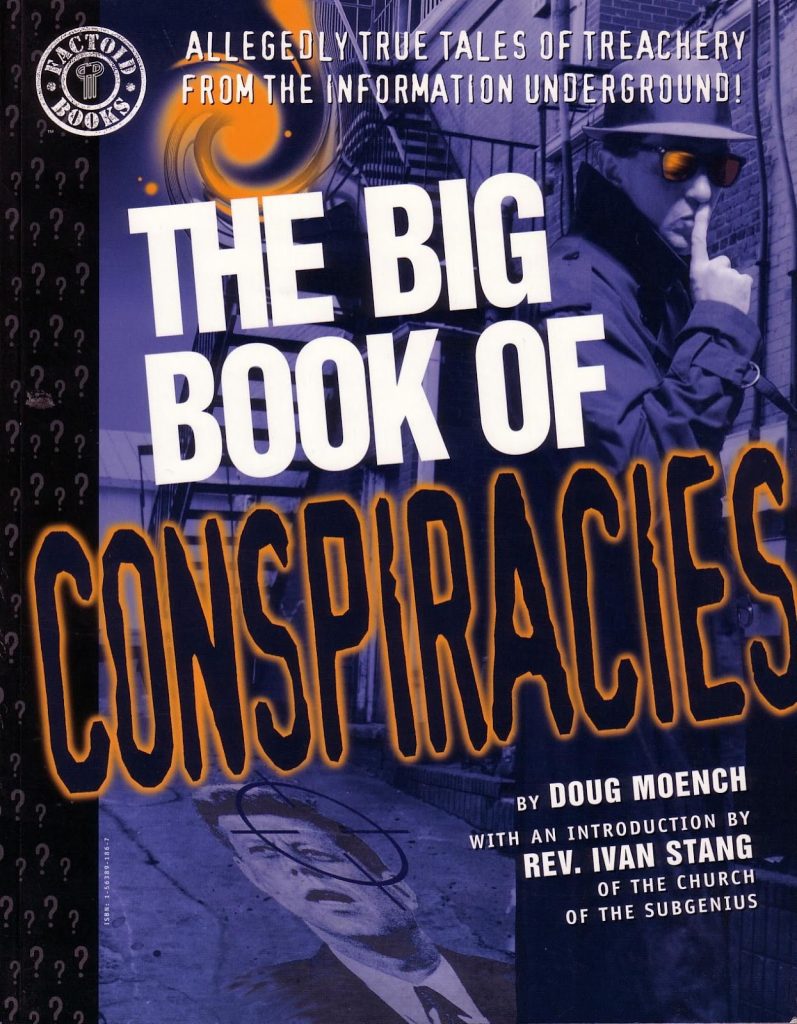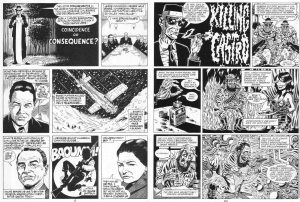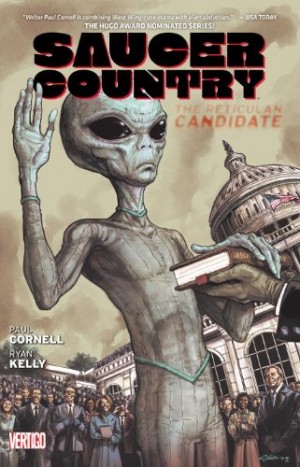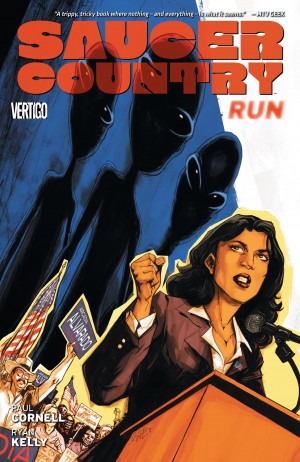Review by Frank Plowright
Earlier entries in the Big Books series have compressed a significant amounts of information into multiple short strips, in the case of Urban Legends, largely single pagers, but Conspiracies features longer chapters, densely packed. One matter instantly resolved is the first series cover credit for the writer, in this case Doug Moench.
An obvious thought is that much has moved forward since 1995. In some cases genuine verifiable information is now in the public domain, while the internet era has meant investigation of alleged conspiracies is no longer the exclusive province of the dedicated, if possibly misguided researcher. On the other hand, theories already sprawling in the 1990s have become infinitely convoluted, open to additions from anyone with a keyboard, screen and high speed connection. If there are matters being hidden, which in some cases seems certain, then being able to look back at theories as they were in 1995 is a valuable resource, offering a reset before things sprawled further.
In 1995 three main areas of conspiracy research were the assassination of President John F. Kennedy in 1963, whether or not the 1969 moon landings were faked, and the possibility of alien collusion since the 1940s. All three remain matters of fervent discussion. Moench scores highly by providing a more rational consideration of events, not discounting the wilder theories, but spending more time on the more plausible. Drawn by Robin Smith (sample art left), his opening chapter tracks the long trail of connections to Kennedy’s assassination, noting the considerable number of people who subsequently killed themselves or died in accidents. He makes a convincing case for this being statistically improbable.
The wonder of conspiracies is the clash of opposites, exemplified by the moon landings. Now it’s those who believe them faked who have the louder voice, yet there’s an alternative theory that the landings are genuine, and what was found on the moon is being concealed.
While every book in the series involved considerable research in the pre-internet era, Moench goes above and beyond. There are 39 entries, but a number of them just being a single pages means longer chapters here than in previous books, and Moench uses them to make connections often referencing earlier entries, with the CIA’s activities prominent.
As before, the number of British artists contributing is high, at just under a third of the total. The artistic mix is appealingly eclectic. The fine art approach of Barron Storey mixes with the exquisite cartooning of Mitch O’Connell, maverick Kevin O’Neill, and Underground Comix great Justin Green while Pat Broderick and Greg LaRoque are better known for superhero material. The other sample art features Graham Manley’s great exaggerated Fidel Castro.
So what might you learn beyond the widely publicised conspiracies? Well, if you choose to believe it, over the years there have been an awful lot of convenient ‘accidents’ or ‘suicides’ when it comes to people who seem to know something. Was the CIA infiltrated by Nazis at an early stage, and is it still continuing much of their agenda? Or does the global reach of freemasonry control everything?
Even with sections running anything up to a dozen pages, unheard of earlier in the series, such is the density of alleged connections The Big Book of Conspiracies will have your head spinning. Moench cross-references cases and lays out the beliefs, and it’s for you to make up your own mind, but it’s a job very well done.







